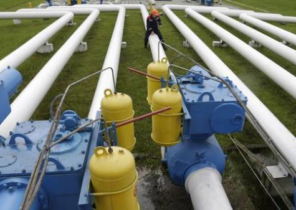Main source — Ethan Siegel (Ethan Siegel), a group of sources “Starts With a Bang”
We can learn about the history of the Universe by looking at ourselves. The body of an adult is a delightful complex system, created from trillions of cells and about 1028 atoms of the constituent elements of all matter on Earth. The story of the creation of man tells us not only about the evolution and history of the Earth but for the Universe as a whole.
Our existence has affected not only the survival, prosperity and fill various ecological niches, but the universe as a whole. The history of our emergence requires consideration of all stages of the development of our cosmic predecessors, starting with the previous generations of stars and merger of ancient galaxies to the Big Bang. Even dark matter plays a crucial role in human existence in this Universe. Humanity has gone 13.8 billion years to appear on Earth, and we finally managed to reconstruct the cosmic history of our creation.
So at a basic level to understand what is a human being, you need to look at the main components of his body to atoms. Oxygen is the main component of our bodies, then there is carbon, hydrogen, nitrogen, and calcium. In total, there are about 56 elements of the periodic system components a minimum of 0.1 milligrams the average person, including light and heavy elements that play an important role in our biological processes.
For the past 200 thousand years of human existence on Earth, each subsequent generation inherits the previous one. Any live specimen comes from a parent organism (or organisms) and genetic material (and all possible mutations) are transferred from parents to child. Thus, any living organism on the planet is connected in its history with a continuous line of life age of four billion years.
However, all that has ever existed species consisted of the same components as the person of the same elements and atoms. All they need is a safe house where you will be able to become a stable form of life that can reproduce and maintain itself for billions of years. This house could be a rocky planet like Earth orbiting a relatively stable star like the Sun. There is no guarantee that the evolution of something like a human is inevitable, but for each planet in the Universe with similar conditions, we should provide that opportunity.
In this case, the question is the following. What needs to happen for the formation of life on a planet like Earth orbiting a Sun like star? We can’t just say: “the universe was so created,” because science doesn’t work like that. In science, if you want to answer the question about the Universe, you have to ask the Universe itself. We do this by creating a hypothesis, conducting experiments and observations and coming to certain conclusions.
Fortunately, this method successfully gives us the answers to our questions.
First we need ingredient is necessary for life elements that make up the periodic table. Carefully examining the Earth and other bodies of the Solar system, including meteorites falling on the planet, we can determine which elements are present and in what amount, in cosmic bodies contain all the necessary nutrition.
The study of the Universe involves the study of large massive stars; supernova education; small, of Sun-like stars; the star remains like white dwarfs and neutron stars; cosmic rays and Big Bang. This information will help us understand where it comes most of the elements. Thus, to create the Universe, allowing the existence of man, we must understand what is required.
Perhaps the answer will surprise you, but we need it all. However, you cannot take all items at the same time.
If our universe began with the Big Bang, the only elements that were then, are the hydrogen, helium and a little lithium (element # 3). The reason is simple: in the early hot stages you have a lot of protons and neutrons at high energy, but also you have a lot of photons, particles of light that repel the protons and neutrons from each other if they collide.
Only when the universe expands and cools enough, protons and neutrons can create heavier elements, and it takes time. However, by this time the environment is less dense and active, and the electric force repelling the two helium atom is so strong that the particles cannot overcome it. During the Big Bang created only the lightest elements. For heavy items you need to wait for star formation.
Left dozens, maybe hundreds of years, the universe had cooled sufficiently, and gravity has collected enough matter in different places to begin the formation of stars. In order for that to happen, the Universe needs:
to be born with certain deficiencies in some areas will be more substance than others;
enough to cool down in order to allow the formation of stable atoms of ionized atomic nuclei and free electrons;
to attract enough matter in one place, so the gas cloud could explode and create the stars;
the explosion must allocate a sufficient amount of energy to the inside of the star has started nuclear fusion.
The first point is the key proof of the expansion of the Universe. The second paragraph is the source of the CMB. The third step takes the most time, those tens or hundreds of millions of years. However, the fourth stage causes a misunderstanding.
Why?
Usually in the formation of stars gas cools, giving energy through its heavy elements. If there is no such elements, the only way to cool down the formation of gaseous hydrogen, however, is extremely inefficient. In consequence, the first stars, which astronomers call population III very different from the present.
In General, the formation of new stars, the universe creates some heavy and massive blue stars. However, a new star is usually small, only 40% of the mass of the Sun. Due to the lack of heavy elements is the middle star of population III were to be 10 times greater than the Sun. This means that they all lived a little and disappeared in an explosion of supernova.
In a sense it is good. Supernovae can not only create a certain number of heavy elements, but they also lead to the formation of neutron stars that may merge together and create the heavier elements like iodine, gold, platinum and tungsten. These first stars important as the fact that they created supernovae.
The problem is that the early star clusters have a low amount of matter, whereas supernovae throw out the matter with great speed. If you do the calculations and compare data “how much material it took to create the first stars of” data “how quickly supernovae emit matter”, you’ll be faced with a puzzle.
The ejected matter spreads too fast for the existing mass. This means that heavy elements must have been extremely fast to jump into intergalactic space.
It’s bad! You need to hold onto this stuff, we need him to form a new generation of stars, specifically to create:
-
subsequent generations of stars to finally get the stars of small mass;
-
rocky planets, so we can get worlds like Earth, and not just gas planets;
-
life, because it is needed for the chemical processes that are possible only in the presence of heavy elements.
Normal is based on the atoms of the Universe is not enough for this. All existing gas, dust and black holes is not enough to create a gravitational force sufficient to hold this matter. In a Universe consisting only of atoms, massive structures like the milky Way is impossible. To create them we need another material: dark matter.
With dark matter, these early star clusters and protogalaxies have sufficient gravity to hold matter, scattering from supernova explosions and other disasters. It allows you to attract more and more matter. Over time accumulates enough matter, including heavy elements for the formation of the more developed stars. These stars are less massive, they are not only the elements of the periodic table, but also white dwarfs, which collide and explode, which leads to the formation of elements such as carbon, nitrogen and calcium that are basic to the human body.
In the end, after billions of years of individual galaxies such as the milky Way, have enough heavy elements to the formation of new stars was around them to create a rocky Earth-like planets. It is believed that approximately 9.2 billion years after the Big Bang, in the area of star formation in the milky Way formed a number of stars, one of which is our Sun. Its protoplanetary disk will develop in such a way that there will be four rocky planets of the inner zone and the outer gas giants. On the third planet from the Sun, the Earth, once formed life, that will lead to the emergence of man.
None of these events were not predetermined. If we rewind time back to the time of formation of the Solar system and then again start the clock, it is very unlikely that we’ll be able to form a life, even if we’ve done it a billion times. However, if we wind the clock back to the early stages of the hot Big Bang, it will be inevitable, the universe is filled with stars, galaxies, rocky planets, solar-type stars and trillions over trillions of chances of the formation of life.
The reason is simple: the laws and basic ingredients of the Universe will remain the same. The universe, born from normal matter will produce light elements. Filled with flaws, the universe will form a generation of stars. The universe with dark matter will pull the discharged materials and forms stars with heavy elements. Universe with the second generation stars form rocky planets and solar-type stars. And the universe with rocky planets like the earth, will make possible the emergence of life, its preservation and prosperity of millions of years. Everything else can be random, but not something that made our existence possible. And depends on all of us, confused we like it or not.







